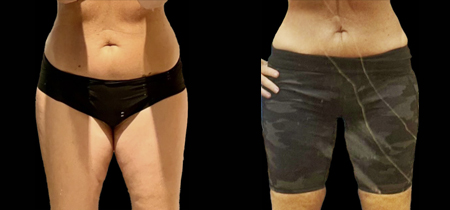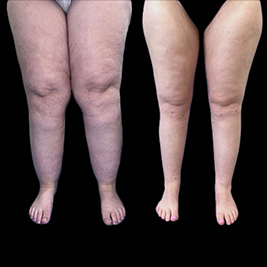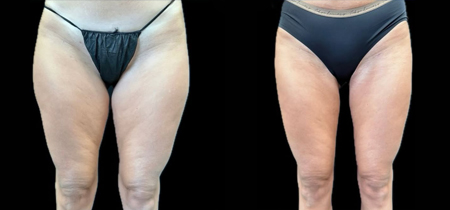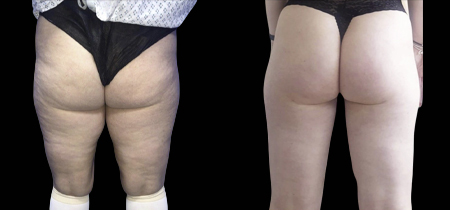Microneedling Recovery & Aftercare with Dr Fasano Congratulations on taking the step toward healthier, rejuvenated skin! Following your microneedling treatment, proper aftercare is essential to...
Introduction
Why Lipoedema Awareness Month Matters
Lipoedema Awareness Month, observed every June, plays a crucial role in spotlighting a condition that has long been misunderstood or entirely overlooked in both the public and medical spheres. Lipoedema is not simply a cosmetic concern or lifestyle issue—it is a chronic medical condition marked by the abnormal and often painful build-up of fat tissue, usually in the legs, thighs, buttocks, and sometimes the arms. Despite affecting millions of women worldwide, it is still frequently misdiagnosed or mistaken for obesity.
This awareness month was established to raise visibility, educate healthcare professionals and the public, and empower those living with lipoedema. For many patients, a diagnosis brings enormous relief after years of shame, confusion, and being told to “just lose weight.” Unfortunately, countless others remain undiagnosed, silently suffering. Raising awareness is a powerful step towards improving lives and ensuring people get the treatment they deserve.
The Growing Conversation Around Lipoedema
In recent years, the lipoedema community has found its voice. Through the efforts of advocacy organisations, healthcare professionals, and patients themselves, the condition is starting to receive the attention it needs. Social media campaigns, virtual events, and expert-led webinars have helped push the conversation forward. Medical specialists like Dr Fasano are essential in ensuring this momentum leads to meaningful, lasting change through accurate diagnosis and compassionate care.
What is Lipoedema?
Lipoedema is a progressive and often painful disorder that causes a disproportionate accumulation of fat, typically in the lower body. This fat is distinctly different from that associated with general weight gain. It’s more fibrous, tender to touch, and tends to be resistant to traditional weight-loss efforts such as calorie restriction and exercise. Lipoedema almost exclusively affects women, usually starting or worsening at times of hormonal fluctuation such as puberty, pregnancy, or menopause.
A key feature of lipoedema is its symmetrical nature. The fat usually develops evenly on both legs and sometimes the arms, while sparing the hands and feet. This leads to a distinct cuffing effect around the wrists or ankles.
How It Differs From Obesity and Lymphoedema
One of the main reasons lipoedema is so frequently misunderstood is that it closely mimics obesity and lymphoedema in appearance. However, unlike obesity, lipoedemic fat does not respond to dieting or increased physical activity. A person may lose fat from their upper body while the lower half remains unchanged or even continues to grow.
Lymphoedema, another condition that is often confused with lipoedema, involves swelling caused by fluid retention and usually affects one limb more than the other. It also includes the feet and hands, which lipoedema does not. Accurate diagnosis depends on recognising these key differences, which trained specialists like Dr Fasano are well-equipped to do.
Causes and Risk Factors
The cause of lipoedema isn’t yet fully understood, but there is a strong genetic link. Many women with the condition report a family history of similar symptoms. Hormonal shifts are another known trigger, and the onset of symptoms often aligns with puberty, pregnancy, or menopause. While weight gain can exacerbate the condition, it is not a cause, and this misunderstanding often leads to misdiagnosis and mistreatment.
Stages of Lipoedema
Lipoedema progresses over time, often moving through four recognised stages. In the first stage, the skin appears smooth, but the fatty tissue beneath becomes thicker and more noticeable. The second stage brings a more uneven texture and nodules in the fat layer, accompanied by increased tenderness. In the third stage, large fat deposits develop, which can distort the body’s shape and impair mobility. The final stage, sometimes referred to as lipo-lymphoedema, involves additional fluid build-up due to compromised lymphatic function, adding another layer of complexity to an already difficult condition.
Common Symptoms and Diagnosis
Recognising the Early Signs
For many, lipoedema begins subtly. There may be a gradual increase in fat around the hips, thighs, or arms, which feels different—heavier, more painful, and more sensitive—than typical body fat. Bruising may occur easily, even without a noticeable impact. Many women also report that their legs feel cold and tender, particularly after standing for long periods.
Over time, swelling may worsen, and mobility may decrease. But despite these symptoms, patients are frequently told their issues stem from lifestyle choices. This adds frustration and emotional distress to an already painful condition.
How Lipoedema is Diagnosed
Currently, there is no specific test for lipoedema, making diagnosis dependent on clinical expertise. An experienced practitioner like Dr Fasano will conduct a thorough physical exam, take a full medical history, and assess symptom patterns. It’s also necessary to rule out other conditions such as lymphoedema or venous insufficiency. Getting the right diagnosis early makes a significant difference in long-term outcomes and overall wellbeing.
Challenges in Receiving a Diagnosis
The path to diagnosis can be long and filled with roadblocks. Because lipoedema is so often mistaken for obesity, many patients spend years trying diet after diet, only to see little to no change in their affected areas. The emotional toll can be immense. Worse still, the lack of awareness among some healthcare providers may lead patients to feel dismissed or blamed for their symptoms.
Raising awareness among both patients and practitioners is key to overcoming these challenges.
Living with Lipoedema
Physical and Emotional Impact
Lipoedema doesn’t just affect the body—it deeply impacts every part of a person’s life. Physically, the condition can cause constant pain, fatigue, and restricted mobility. It becomes difficult to stand or walk for long periods, and even getting dressed can be a struggle. Many women find it hard to find clothes that fit comfortably or feel confident in social situations.
Emotionally, lipoedema can be devastating. Feelings of shame, isolation, and depression are common, especially when others do not understand the condition. The internalised blame from years of misdiagnosis only adds to the psychological burden. Understanding and support can be transformative for people navigating this journey.
Lifestyle Adjustments
While lipoedema cannot be cured by lifestyle changes alone, adopting a holistic, health-focused routine can greatly improve quality of life. Gentle, low-impact exercise like swimming or walking helps maintain mobility and boosts mood. A diet rich in anti-inflammatory foods and low in processed sugars can support general health and help reduce discomfort. Compression garments, worn daily, can alleviate swelling and provide structural support to affected areas.
Most importantly, these adjustments should be guided by professionals familiar with lipoedema. Dr Fasano’s team works closely with patients to tailor strategies that are both practical and sustainable.
Treatment Options for Lipoedema
Conservative Management Techniques
The first line of treatment for lipoedema usually involves non-surgical methods. Compression garments play a major role in managing symptoms. These specially fitted items help promote lymphatic flow, reduce swelling, and alleviate pain. Manual lymphatic drainage (MLD), a type of specialised massage, can also provide relief by helping to move excess fluid through the lymphatic system.
Exercise and healthy nutrition are recommended to support general wellness and reduce inflammation, even if they do not directly reduce lipoedemic fat. It’s crucial to remember that while lifestyle management is helpful, it’s not a cure—and patients should never be made to feel that lack of progress is their fault.
Surgical Options
For those with more advanced lipoedema or whose symptoms do not improve with conservative measures, surgical treatment may be appropriate. Liposuction—specifically tumescent or water-jet assisted techniques—can remove diseased fat tissue permanently. Unlike aesthetic liposuction, this procedure is performed for medical reasons and can significantly reduce pain, improve mobility, and restore body confidence.
Dr Fasano has extensive experience in performing liposuction for lipoedema patients and uses the latest techniques to ensure the safest, most effective results. Each patient undergoes a thorough assessment to determine whether surgery is the right option and what kind of aftercare is needed.
The Role of Healthcare Professionals
Why Early Intervention Matters
Like many chronic conditions, early intervention with lipoedema can lead to better outcomes. By identifying symptoms in the early stages, patients can begin treatment to manage pain, reduce swelling, and slow disease progression. Early diagnosis also means patients are less likely to develop complications such as lipo-lymphoedema or joint damage.
How Clinics Like Dr Fasano’s Support Patients
Dr Fasano’s clinic offers a comprehensive and supportive environment for anyone seeking help with lipoedema. From initial consultation through to treatment and follow-up, patients are guided with care, professionalism, and empathy. Each treatment plan is personalised, whether it involves conservative therapy, surgery, or both.
Multidisciplinary Approaches to Care
Effective treatment of lipoedema often requires a team approach. Physiotherapists, lymphatic massage specialists, dietitians, and mental health professionals all play key roles. At Dr Fasano’s clinic, care is coordinated to ensure every aspect of the patient’s experience is considered and supported.
Raising Awareness During Lipoedema Awareness Month
History and Purpose of the Campaign
Lipoedema Awareness Month began as a way to break the silence around a condition that affects millions yet is widely misunderstood. Today, it is a global campaign that encourages education, destigmatises the condition, and brings patients together.
Activities and Events Held in June
Throughout June, clinics and organisations host events to raise awareness. These include webinars, social media challenges, and patient forums. Some clinics offer free assessments or educational resources to help people recognise symptoms they may have long ignored or misunderstood.
How You Can Get Involved
Whether you’re a patient, family member, or healthcare provider, you can contribute by sharing educational content, participating in events, or donating to lipoedema-focused charities. Even simply starting a conversation can make a difference.
Breaking the Stigma During Lipoedema Awareness Month
Addressing Misconceptions About Lipoedema
Too many people still believe that lipoedema is caused by poor diet or laziness. This misinformation leads to shame, underdiagnosis, and inadequate care. By correcting these myths, we can ensure patients are treated with the respect and seriousness they deserve.
Encouraging Empathy and Understanding
Lipoedema Awareness Month isn’t just about information—it’s about empathy. When we listen to and support those with lipoedema, we help build a healthcare environment that is inclusive, respectful, and empowering.
Resources and Support
Where to Find Help and Information
There are several organisations dedicated to lipoedema education and support, including Lipoedema UK, Talk Lipoedema, and The Lymphoedema Support Network. also offers trusted, up-to-date resources for patients and families.
Educational Tools for Patients and Families
From printed guides to webinars and workshops, educational materials help demystify lipoedema for both patients and loved ones, making it easier to cope and care effectively.
The Importance of Ongoing Awareness
Lipoedema Awareness Month is more than just a calendar event. It’s a critical opportunity to shift the public perception of lipoedema, advocate for earlier diagnosis, and demand better care. For those living with the condition, it is a chance to feel seen and supported.
Book a Consultation With Dr Fasano Today
If you believe you may have lipoedema—or if you’ve been living with unexplained leg or arm swelling and discomfort—it’s time to take the next step. Dr Fasano is one of the UK’s leading lipoedema specialists, offering expert diagnosis and advanced treatment options tailored to each patient.
Take control of your health and start your journey towards understanding, comfort, and renewed confidence.







